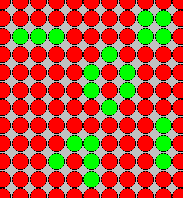
PAUL GROBSTEIN
Information for prospective Keck Fellows


| PAUL GROBSTEIN | 
|
I'm a neurobiologist, with a long-standing research program grounded in studies of the neuronal organization underlying directed movement in the frog. In recent years, this research has focused around two questions: the nature of spatial representation in the brain. and the origins, organization, regulation and significance of unpredictability in neuronal function and behavior. The research is also related to several broader questions, including the distinction between conscious and unconscious processing, and the nature of individual choice and free will, which we are exploring in a variety of experimental and practical contexts.
 I'm also a biologist and an educator, with an array of more general interests in the underpinnings of human behavior, the nature of biological, cultural, and intellectual change, complex systems and general information processing principles, and the character of human understanding and the relationships among its different forms. Associated with this is a strong and also long-standing commitment to improving the educational environment at all levels and for all people.
I'm also a biologist and an educator, with an array of more general interests in the underpinnings of human behavior, the nature of biological, cultural, and intellectual change, complex systems and general information processing principles, and the character of human understanding and the relationships among its different forms. Associated with this is a strong and also long-standing commitment to improving the educational environment at all levels and for all people.
I find my various identities and interests to be mutually supportive and reinforcing rather than conflicting. My research activities are both informed by and contribute to my broader interests and activites, including teaching. Common to all of it is a strong belief in the capabilities of the human brain to explore and create, both individually and collectively, in ways that achieve improved understandings of the human condition and open new avenues for its further development. And a belief that modern information technology, including the web, is a distinctive and valuable tool for the extension of human understanding.
I'd be delighted to collaborate in both research and teaching with a junior colleague having overlapping and complementary interests, commitments, and enthusiasms.
ACADEMIC CAREER B.A, Harvard University, 1969 Grant Involvements (partial list) Research grants from NSF, NIH, Whitehall Foundation Selected Publications Grobstein, P. (1990) Strategies for analyzing complex organization in the nervous system. I. Lesion experiments, the old rediscovered. In: Computational Neuroscience. (Schwartz, E., ed.), MIT Press, pp 19-37. Grobstein, P. (1992) Directed movement in the frog: motor choice, spatial representation, free will? In: Neurobiology of Motor Programme Selection: New Approaches to Mechanisms of Behavioral Choice. (Kien, J., McCrohan, C., Winlow, B., eds.), Pergamon Press, pp 251-279. Grobstein, P. et al. (1995-present) Serendip, a WWW resource - http://serendipstudio.org Includes: On Beyond Newton: From Simple Rules to Stability, Fluctuation, and Chaos The Magic Sierpinski Triangle, Order Dependent on Randomness Simple Networks, Simple Rules: Learning and Creating Categories Patton, P. and Grobstein, P (1998) The effects of telencephalic lesions on visually mediated prey orienting behavior in the frog (Rana pipiens). I. The effects of complete removal of one telencephalic lobe, with a comparison to the effects of unilateral tectal lobe lesions. Brain, Behavior, and Evolution 51: 123-143. Patton, P. and Grobstein, P (1998) The effects of telencephalic lesions on visually mediated prey orienting behavior in the frog (Rana pipiens). II. The effect of limited lesions to the telencephalon. Brain, Behavior, and Evolution 51: 144-161.
M.A., Ph.D., Stanford University, 1970, 1973
Postdoctoral Fellowships at Johns Hopkins University, Stanford University
Assistant and Associate Professor, University of Chicago, 1974-1985
Professor of Biology, Bryn Mawr College, 1986-present
1986-1993, Chair of Department
1988-present, Eleanor A. Bliss Professorship
2000-present, Planning Director, Center for Science in Society
Neural and Behavior Systems Group, A TIDE-POOL project (private donor)
Howard Hughes Medical Institute Undergraduate Science Education grant to Bryn Mawr College (PI)